David Revoy on Why Free and Open Source Software Matters
Read the Spanish translation of this interview on anartist.org
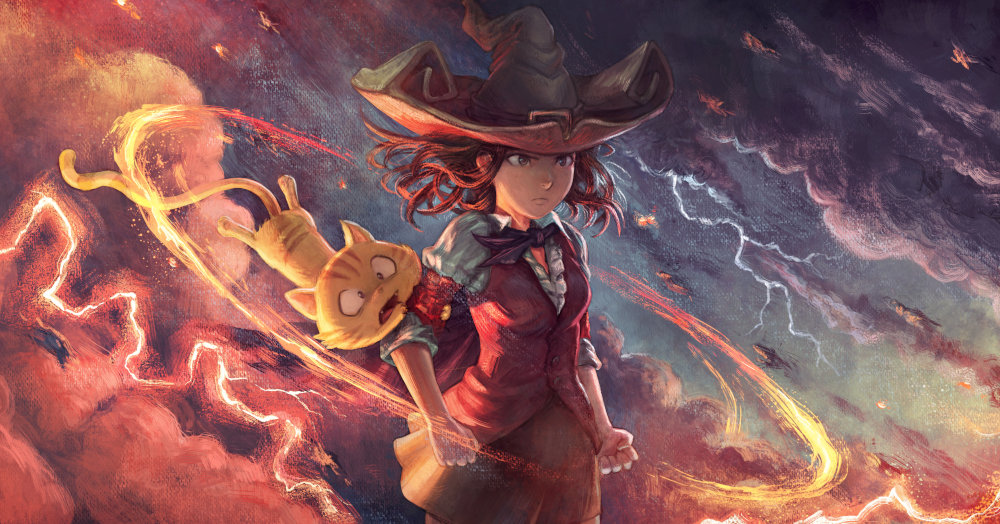 “Powerful” by David Revoy − CC-BY 4.0
“Powerful” by David Revoy − CC-BY 4.0
David Revoy is a French illustrator living in the country’s south, near the town of Montauban. After working as a freelance artist for over 20 years, he’s become experienced in illustration, art direction, concept art, visual storytelling and even teaching.
Today, David spends his time working on Pepper&Carrot—a colorful webcomic about a young witch and her cat.
In-between drawing episodes, he sometimes makes illustrations for the non-profit association Framasoft. You might know them as the creators of PeerTube, but they also provide a host of de-Googled services you can use for free.
David is one of the few artists championing free and open source software in our community. We invited him here to tell us about his past, the world of Pepper and Carrot, as well as to explain why FOSS tools should be an integral part of every creative’s process.
Hi David! Why don’t we start by talking about your journey so far? We’re all curious about your work, the influences behind it, and any experiences that helped you become the person you are today.
Hey! Oh wow, it’s been a long journey… I started doing digital art in the late ‘90s and became a professional in the early 2000s.
I have seen many eras of the internet and used many tools, I’ve taught many classes and tried working in many industries for various companies.
It made me realise that, after all these years, I just want to work alone from home, using only free and open source tools like Krita on a GNU/Linux operating system.
Now I focus on publishing my webcomic on the internet under an open Creative Commons Attribution licence.
I’ve been doing this for almost 10 years now, thanks to the financial support of my audience. I still do some freelance work between episodes, but it’s mostly for non-profit organisations that allow me to publish under Creative Commons and for ethical projects.
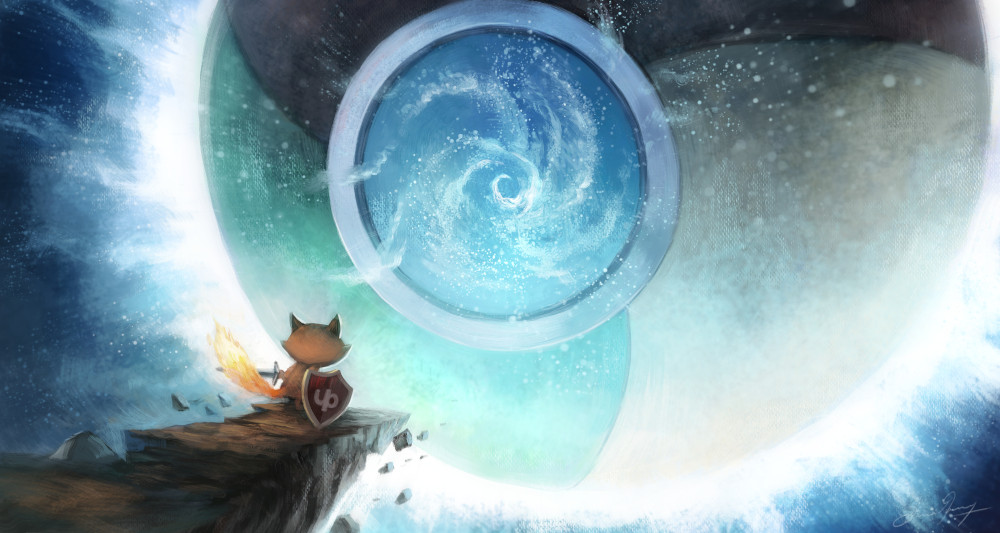 “Fighting For The Open Web” by David Revoy − CC-BY 4.0
“Fighting For The Open Web” by David Revoy − CC-BY 4.0
You’ve promoted free software for a long time. Why is it so important that people, and especially creatives, use free and open source tools in their work?
I think for creatives, free and open source software like Krita, Inkscape, Blender and Scribus (but also the GNU/Linux operating system and many more) are the closest thing we have to a worldwide union.
We have the right and permission to use the software on any machine, install many copies, and run it without restrictions.
The licence protects us and allows us to keep these rights in the future. We can also crowdsource the development (e.g. by donating to the Krita Foundation) or make it ourselves by participating in bug tracking, contributing new features and resources, etc.
In the end, we all benefit from being actors in the product rather than end users (consumers).
This is incredibly important because proprietary software continues to evolve towards malicious decisions that maximise the profits of their company’s shareholders. That’s why you see tracking built into digital painting applications, monthly subscriptions with complex plans, geographical usage restrictions, and sponsorships to encourage influencers to use their products (turning social media into a pay-to-win space, but that’s another topic I’ll unwrap later).
I just don’t like it and I don’t want to contribute to such disgusting systems. Even if the tools are probably a bit more polished, more ergonomic, and more powerful, I don’t think it’s worth all the downsides.
I also don’t like tools that are only available to the part of the population that can afford them. It excludes many creatives from many countries because they simply cannot pay.
Finally, I think it’s dangerous to invest hours and hours of learning and skills in a product you don’t own. At any moment, the brand can do something against your core values, or get sold to another brand that will change all the features you like using in your process.
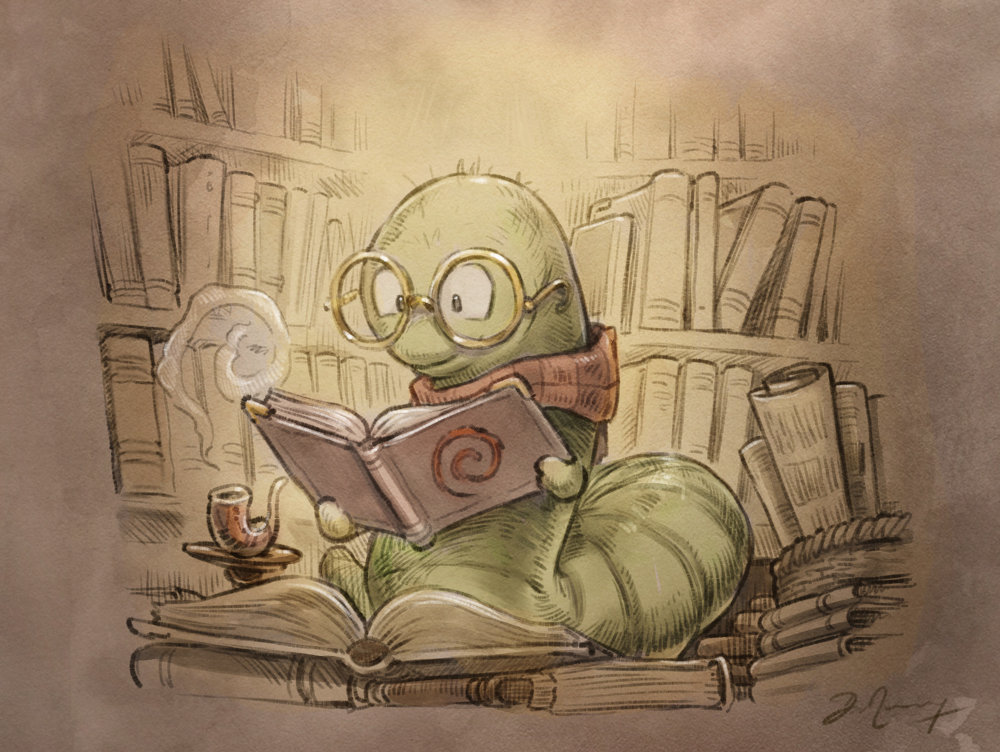 “Bookworm” by David Revoy − CC-BY 4.0
“Bookworm” by David Revoy − CC-BY 4.0
Do you have any favorite FOSS tools you’d recommend? They don’t have to be related to art. Please list anything that’s improved your life, or just stuff you think is cool!
I have already mentioned Krita, Inkscape Blender and Scribus; and I could go on about GIMP, FontForge, MyPaint, Drawpile, Hugin, Nomacs, and DisplayCAL for the creative types. Though I think we should delve into lesser-known projects that are more about applications that help me organise my life:
TreeSheets
A cross between a spreadsheet and a to-do/brainstorming tool. I like how I can put a box inside a box. I can add so much depth to my ideas and brainstorm better. This tool really helps me to write out my thoughts, stories and decisions.
Xournal++
This is a multipage annotation software and my secret quick tool to edit PDFs and fill in forms, sign them or make notes in the margin of any document.
With all the PDFs sent by organisers of signing sessions, publishers, sponsors, etc. It’s valuable to have such a quick tool!
Zim
Your very own wiki. I use it to write my own documentation: things I’m learning and don’t want to forget (command lines, names, references, etc.), recipes I like to cook, information about the next episode of my webcomic, step-by-step instructions for reinstalling a piece of software.
Many of my articles on my blog are clean-ups that came from this personal wiki.
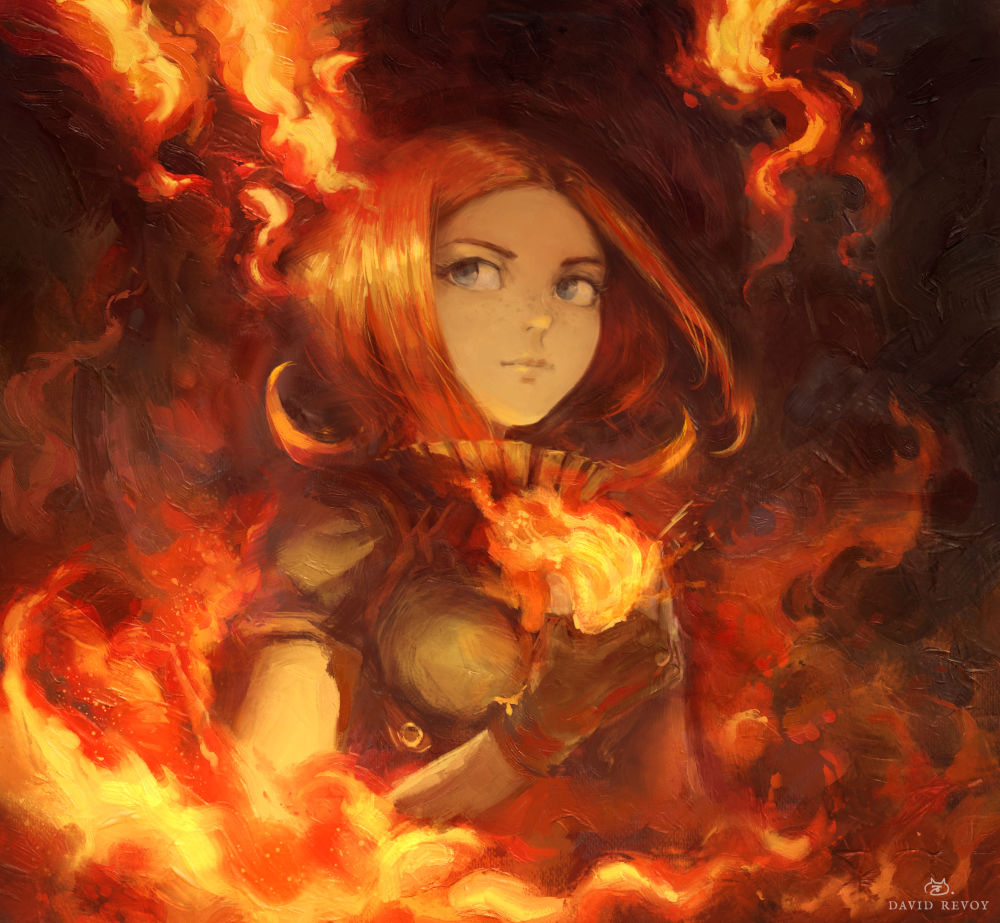 “Queen of Fire” by David Revoy − CC-BY 4.0
“Queen of Fire” by David Revoy − CC-BY 4.0
Peek
Peek is a simple tool used to make gif animations by recording an area of your screen. Ideal for capturing software features for documentation or social media.
gtimelog
For when I need to keep track of how much time a project is taking me.
ghostwriter
Great for typing my webcomic scenarios, especially the first drafts (the long fuzzy, and dense walls of text that contain the gem). I’m removing, editing, and trimming by pairing it with Kate with versioning turned on.
If I trim too much, I can check the history of changes with tools like Meld or gitk. The extension for my file manager (Dolphin) also shows me when the files have changed and details the revisions.
Before using these tools, I was always afraid of deleting, erasing, and truncating. This was problematic because I need this kind of ‘stripping down’ all the time to write my new webcomic episodes.
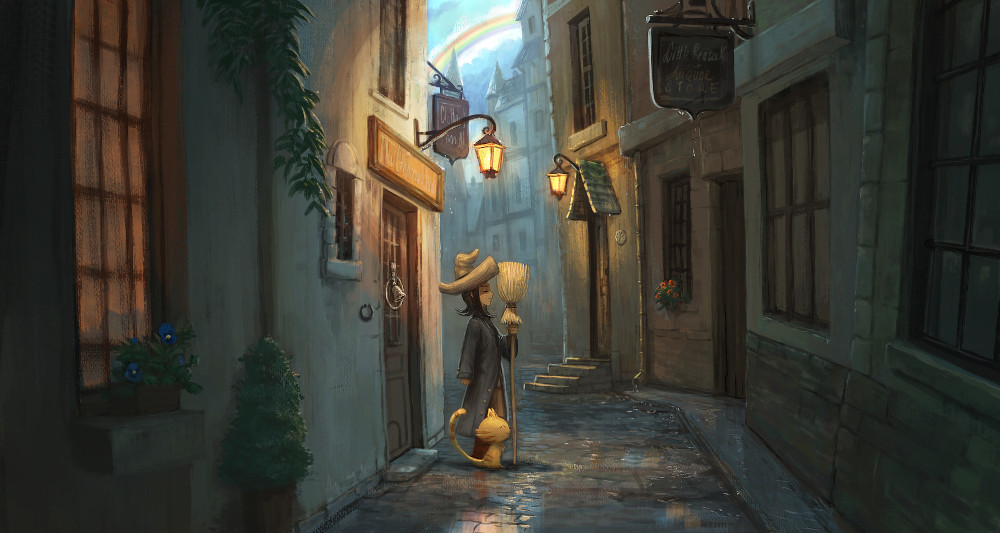 “The after rain smell” by David Revoy − CC-BY 4.0
“The after rain smell” by David Revoy − CC-BY 4.0
I’m sure everyone who views your portfolio will instantly become a fan of Pepper&Carrot; its world is so rich it could become an animated series! Can you tell us more about it and introduce us to the characters?
Thank you! Many companies approached me about making an animated series, but they all struggled to get a pilot done. I have spent more time than I care to admit in random studio meetings, all with the same goal. Each time I tell them the same thing: they can’t have me on board. They need to find their own art director and reuse the Creative Commons material with respect. I always offer to help as a remote consultant.
Pepper&Carrot is the story of Pepper, a young witch, and her cat named Carrot. The episodes are about funny, important or emotional parts of her life and we follow her growing up.
The series started ten years ago when Pepper was about 10 years old, and the episodes have continued into her twenties.
Pepper has changed a lot, and it’s hard for me to portray her. There is Pepper the child, Pepper the student, Dark Pepper… She often gets into complex situations and thinks outside the box to solve problems in truly original ways.
That’s what I like about Pepper, her chaotic way of thinking.
 “Run” by David Revoy − CC-BY 4.0
“Run” by David Revoy − CC-BY 4.0
Carrot is here as a cat to add a bit more randomness to the process. He is also a good problem solver and they make a great team. They live in a fantasy world that is a colourful parody of many fantasy worlds I like, with friends, masters, creatures, more magic schools, etc.
The story does not really revolve around an enemy, or saving the world from evil, or any other overused plot device. Pepper&Carrot is mainly about the lives of Pepper and Carrot and how they develop. It’s challenging to write a hybrid format with characters that evolve through (mainly humorous) episodes, but as the years go by, I’m more and more happy with how it’s shaping up.
People often struggle to create consistently, and I think many want to know how others overcome these challenges. Tell us, what gets you in the mood to draw? Do you have a routine or a ritual that can put you into the right headspace?
I don’t have any routine or ritual. I just do it. It’s probably easier because it’s been my day job for 24 years.
I will say, when I feel I’m struggling to work on something, I often think about the phrase “it’s now or never.” I probably have a mind that would be tempted to find excuses, so that’s what I try to overcome.
For example: The sitting position will never be perfect, the light will never be at the right intensity or angle, the timeframe available will never be ideal. Even the hardware, the pen, the software or the paper and pencil rarely work the way I want them to. The environment is full of distractions, and this moment in life may not be emotionally ideal. The to-do list may look like it will explode and the people in charge may pressure me to do things. Still, here I am, playing on paper, trying to make good art. Today. Now.
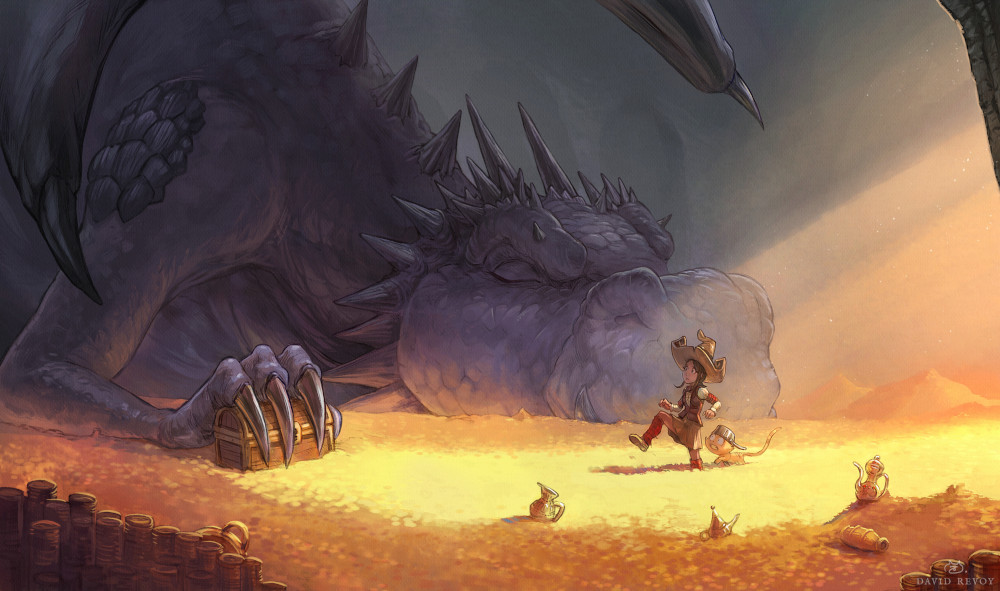 “The Treasure” by David Revoy − CC-BY 4.0
“The Treasure” by David Revoy − CC-BY 4.0
Oh yes, all these things make my quality fluctuate, my ideas more or less good. I guess it’s obvious, but getting a super result is not my goal most of the time.
After drawing, I always find myself with a higher sense of psychological balance, a cheerful mood, inner peace and a sense of control over the random events in my life.
It’s a meditation, and it’s fun. This is the biggest reward I get from it.
I can use drawing to communicate positive things, like the smiles and poetry around me. I certainly designed Pepper&Carrot with its ‘out of the box’ thinking, humour and colourful brightness with positive experiences in mind.
Can you show us the first piece you were genuinely proud of? I always see artists with low confidence or motivation because they feel they aren’t improving fast enough. What do you think a beginner needs to do to do to feel like they’re getting better?
The first work I was proud of? Maybe it was my first drawings as a child, but I don’t have them anymore. Instead, I can show you my first digitally colored comic page from back in 1997. I was 16 years old with an early version of Corel Photo-Paint. I made it with a mouse on a Pentium 100mhz PC with a 40GB hard drive and probably 16MB of RAM.
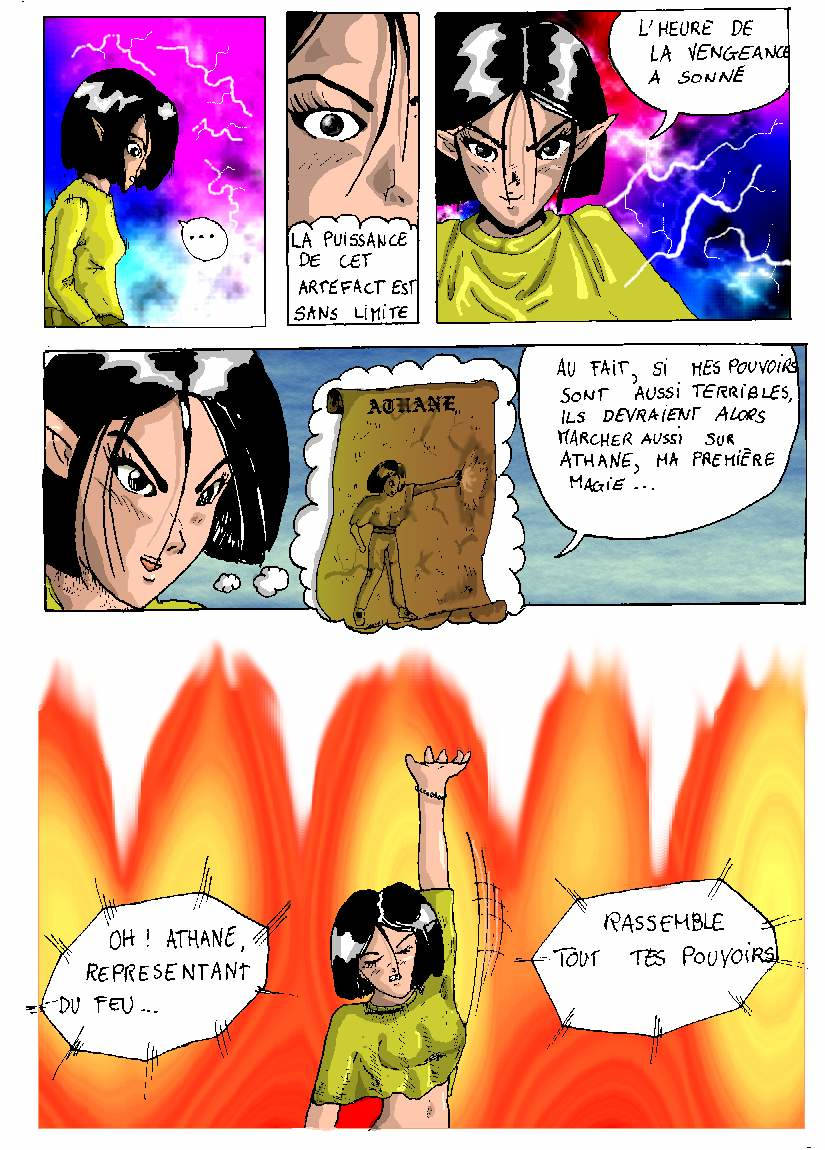
Digital colouring was still in its infancy during those years. I had almost never seen computer coloured drawings outside of video games on the PC, SNES and PS1. Sometimes the CDs with demos that came with magazines would have them, too.
I was motivated to try it because I saw the first comics do it and it felt like the future. My first contact with the internet was also around 1998 or 1999.
So I was spending time at home, learning how to make things I rarely saw anywhere else without any help. The scanner I bought for this machine cost me an entire season of summer work. It was super expensive, but fortunately, the software came bundled with it.
Hopefully that gives you some context.
Many 16-year-olds can now take a photo of their page with their cheap smartphone, experiment with the contrast and colour in Krita with a mouse, and access many tutorials, examples, source files, etc…. I wish I had that!
It took me a long time to improve, and even at 42 and with a lifetime of drawing, I’m still not as good technically as some teenagers I see online.
My advice for getting better? Don’t compare yourself to others. Be curious, focus on practice and study. Spend as much time as possible on each of your final renders. Just do it until you can’t do any better. Brainstorm and analyse what skills would have made the process easier. Think about how you could train to overcome this or that. Keep learning and challenge the things you think you are good at.
Yes, I know it sounds like the same old advice you have probably read everywhere, but as I wrote about in an episode of Pepper&Carrot, I believe there are no shortcuts. It’s hard. It’s not meant to be easy. You can find your own way of solving problems.
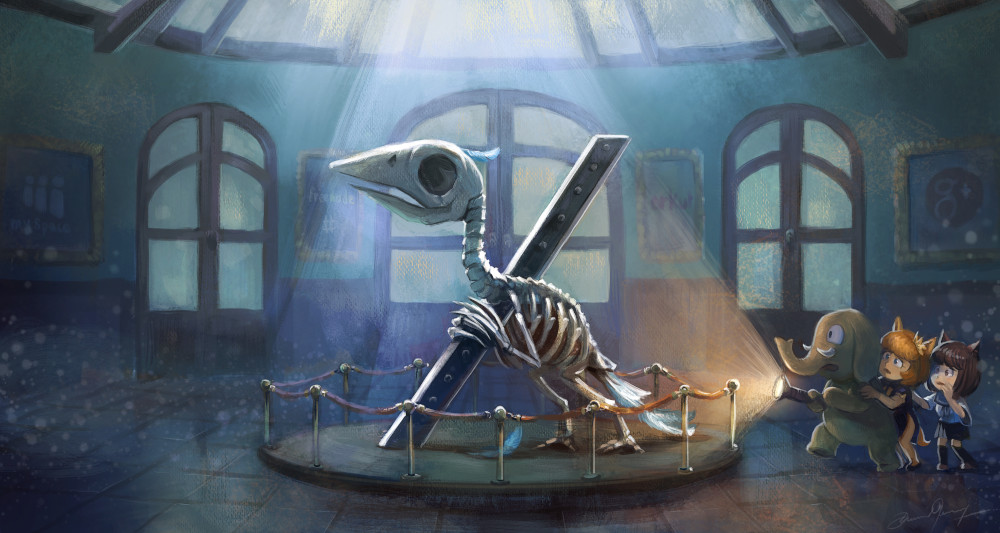 “Scary” by David Revoy, with mascots of joinmastodon.org, pleroma.social, and misskey-hub.net. − CC-BY-SA 4.0
“Scary” by David Revoy, with mascots of joinmastodon.org, pleroma.social, and misskey-hub.net. − CC-BY-SA 4.0
Many artists try to grow their fanbase using social media, but it rarely works as quickly or as well as we might imagine. What’s the big secret? How can an aspiring illustrator successfully build a community around their work?
If you use corporate-owned social media, you’ll see that they clearly oriented the model towards a pay-to-win system. A brand will sponsor you to boost your publication, but you’ll have to make adverts for them—sometimes even in disguise.
You’ll have to pay to reach more followers and the algorithm will boost your fan art for the latest Netflix or Disney+ series so that everyone on the timeline thinks “people are watching this!” Sure, It gives you reach, but it also turns you into an advertising panel for other brands.
This is not my cup of tea, and I closed my XTwitter account last month for this reason (among many others), even though it had 13,000 followers. I’m now mainly using my Mastodon account—a social media network based on an open protocol with many clients able to connect to it (it’s free and open source). There is no algorithm, no boost or deboost, and all your followers see what you post (if they read your TL). I find it a bit easier to continue my work and reach a new audience while preserving my values and ethics.
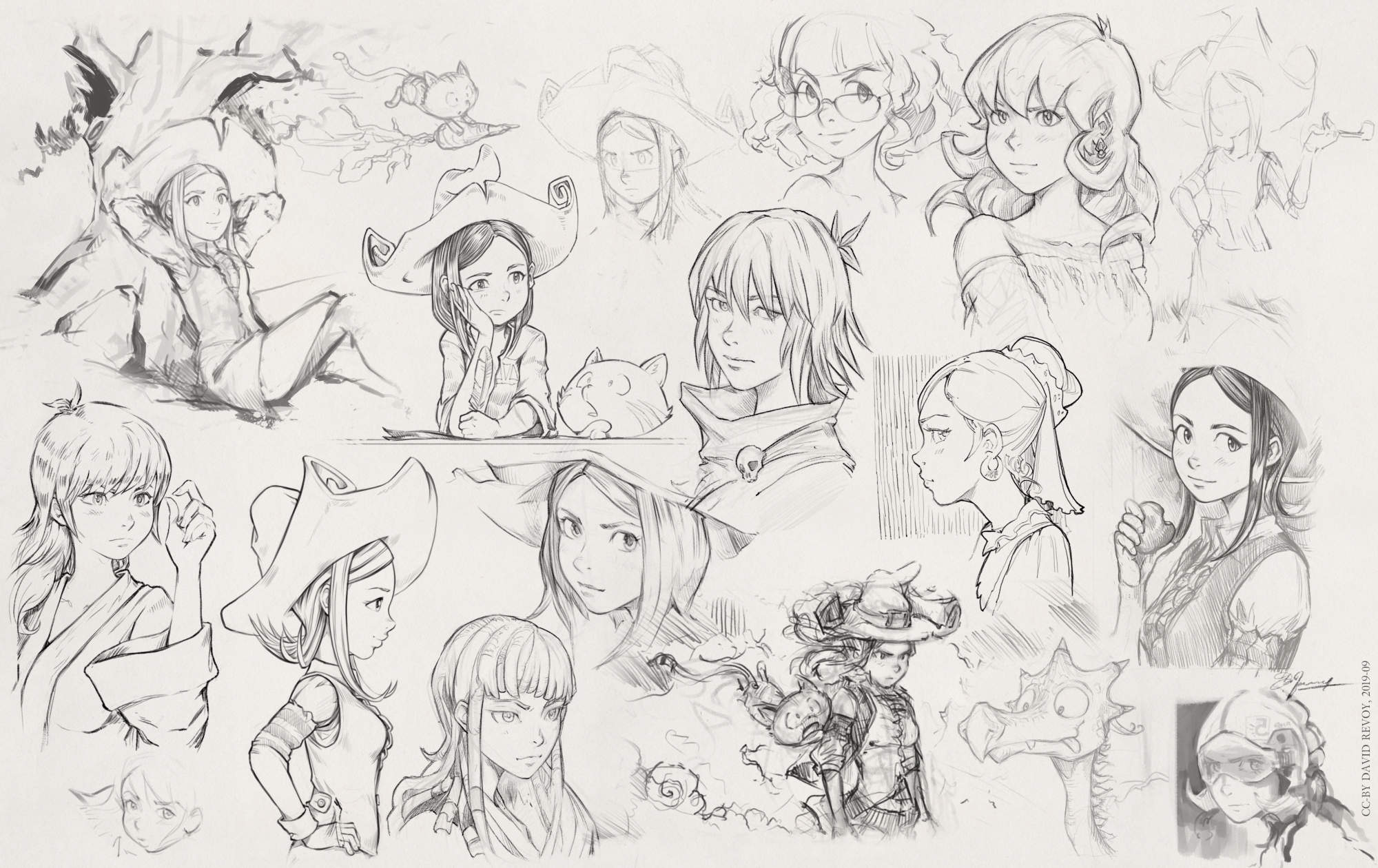 “Sketches collection” by David Revoy − CC-BY 4.0
“Sketches collection” by David Revoy − CC-BY 4.0
What is the big secret to social media? I have no idea. From my view, I think that trust and sincerity in communication are essential. Don’t copy the recipes of advertising or marketing people who tell you to post at specific times, only share certain types of content, use tested phrases, and so on. This is BS that everyone knows, and it’s an insult to the intelligence of your followers. They’re not pigeons, they’re human beings like you—and here’s a tip: think of them as twice as intelligent as you (because they probably are).
If you need something, ask for it. If you feel something, write it down. But they’ll always see that you’re trying to trick them. We all see it.
It’s not your trick that will make you big in the end. I believe success will always come from others who enjoy your work, your philosophy, or what you represent. There’s too much chaos and connections behind the scenes and you can’t predict who will decide to make you bigger or help you reach a wider audience while you’re not looking. A publisher? A big channel? Another creator? A celebrity? Or a community?
You just have to focus on what you control: your work, your quality, and your honesty.
That way, you’ll at least be part of the ‘pool’ ready to be crowned by whoever is in charge. So luck is a big part of it. Just do your work for the sake of curiosity, quality and making your work great for what it is.
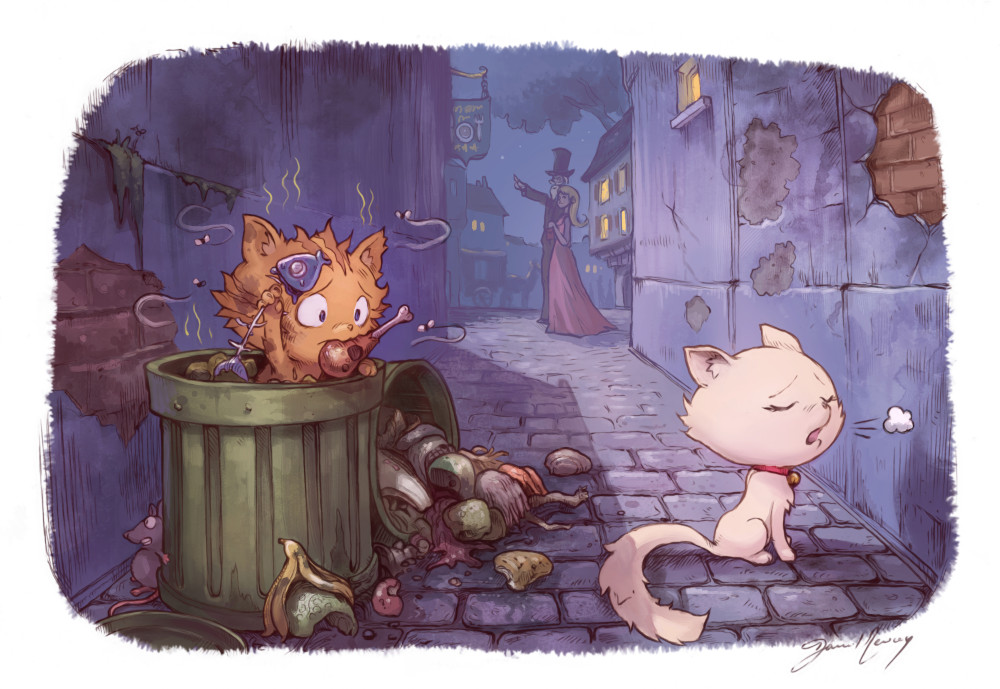 “Filthy” by David Revoy − CC-BY 4.0
“Filthy” by David Revoy − CC-BY 4.0
Digital media and social networks changed art forever, but with all the technological developments we’re seeing, I think it might be at a crossroads again. What do you think art looks like a decade from now?
The control of social media by large corporations and billionaires has already polarised the resulting industry and crowned a small group of archetypal artists, giving them many privileges. They are everywhere: selling products, doing guest artworks for new games, working as ambassadors for tablets and software, etc.
All of them are also politically neutral (in line with current hyper-capitalism). They are pure products of hidden producers. It’s easy to find parallels to what the pop music industry has done in the past; with celebrities, boy/girl bands, and all other products they prop up.
Ten years from now? They’ll just continue to milk the industry, and as soon as a public figure is no longer useful, they’ll find a replacement.
New artists who are overly talented and easy to market will continue to make a future generation of wannabe artists feel bad about their own skills and dream of owning the products the dream artist recommends. I don’t see generative AI playing any part in this, because it’s really about people and the myth of “talented people.”
I see companies, social media groups affiliating them, getting a percentage but in return boosting or paying them more followers and creating an illusionary feeling of ‘fame’ for marketing reasons.
In summary, I see a totally cheated market built around the pay-to-win idea.
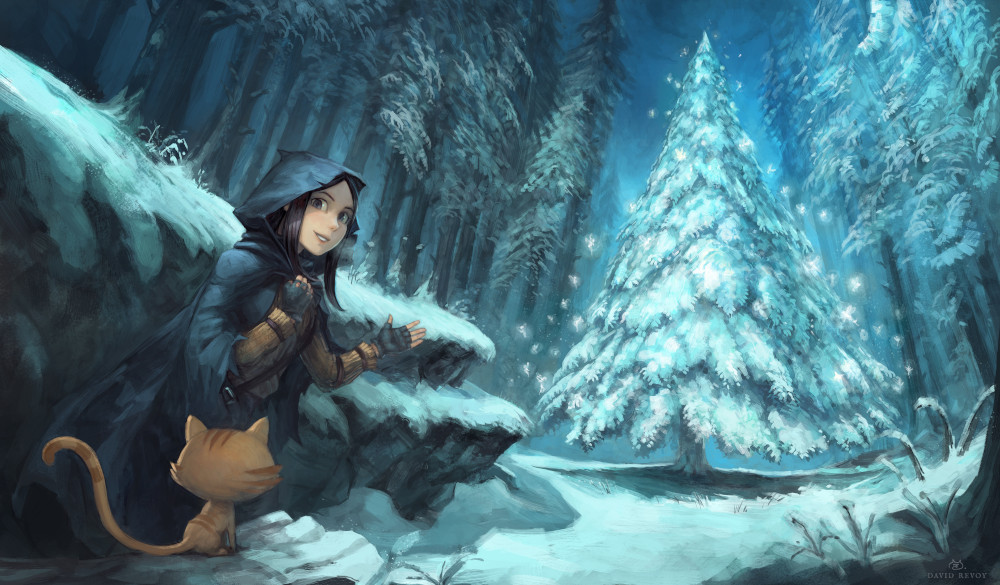 “Winter Fairies” by David Revoy − CC-BY 4.0
“Winter Fairies” by David Revoy − CC-BY 4.0
On a more positive note, the Internet will always have an ‘off’ and an underground… a place made up of forums, free social media, networks of good old blogs with indie artists making their art because they want a chance to do it for a living.
It will revolve around the patronage/donation model, or a small shop or service. It will never be interesting for the big industry, but I believe it will be the core of creation on the web and a real tank for creating new cultures and lasting change. I’ve chosen this path and will keep making art until I’m too old to continue.
Now for a quick, fun question! What are some of your favorite films and what makes them special to you?
I don’t really have any favourite films anymore. In the past I had favourite sci-fi movies like Blade Runner, The Fifth Element or The Matrix, but they kind of make me smile now (or horrified at how badly the “romantic scene” of Deckard and Rachael has aged). I really enjoyed the concept art part of them and the vehicles, the environment and the special effects.
Then I had my period of dark and obscure films. The ones that were edited to leave a lot of room for interpretation or thought. This includes films like Mulholland Drive, Fight Club, Lost Highway, Memento, Battle Royale… But I don’t watch them much anymore. Even if they made me feel smart, they also make me feel bad now because their themes are often too dark and pessimistic. Inception was also (relatively) recently part of this pool for me. I really liked it.
I’ve always loved Kiki’s Delivery Service, Spirited Away and My Neighbor Totoro. I still think they’re unrivalled animated masterpieces.
I don’t watch films anymore. I probably watch less than 5 a year now. Same with video games and series. I’m working all the time or maintaining things at home and I only have a little “late Saturday afternoon” time budget to explore media that takes time. If I ever watch films, it’s only when I have short breaks.
My latest crush was Everything Everywhere All at Once and it felt like I was rediscovering something magical about the film format.
What’s next for David Revoy?
Pepper&Carrot book 5! I still need 5 or 6 episodes to have enough content to turn this into a book, but I already have a good vision of what could make the 5th book of the series something that takes the series to another level.
No spoilers, but it could be another paradigm shift like I did with book 4. Book four changed the tone of the series to something deeper and more complex. Suddenly the perception of the series changed and the usual criticism changed too. Even the placement of the book in bookshops in France changed. I’m really happy about that effect.
I would like book 5 to have the same kind of offset with the series and I’m working hard on it. I’m currently drawing episode 39, which could be one of the core episodes of this future book. It’s long, difficult to write and very challenging.
If you enjoy David’s work, consider visiting his website or following him on Mastodon.
Please donate to perephoneia.art if you liked this interview. Your support helps cover the hosting costs for the website, keeping it free and online for others to discover.
